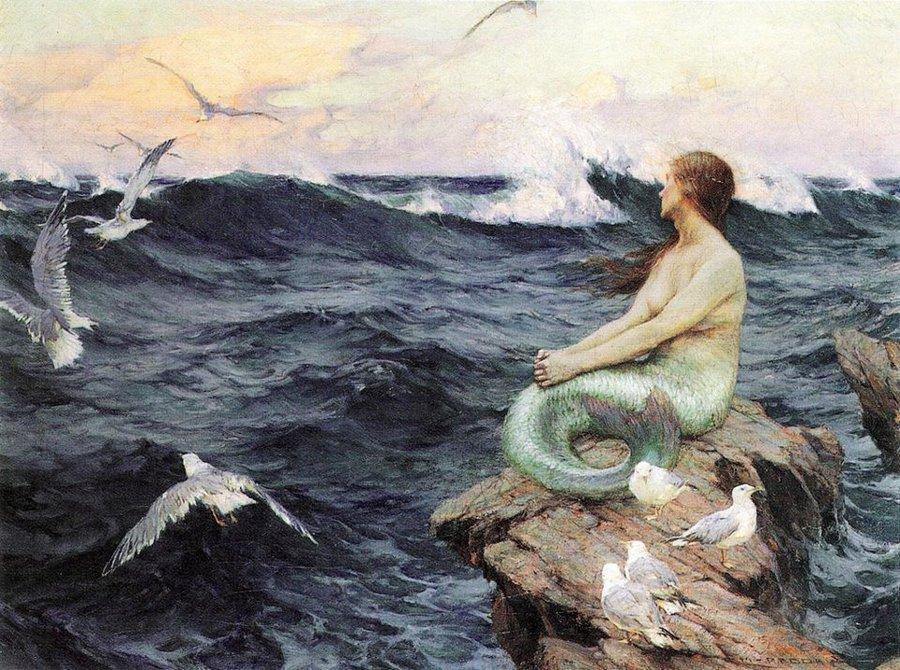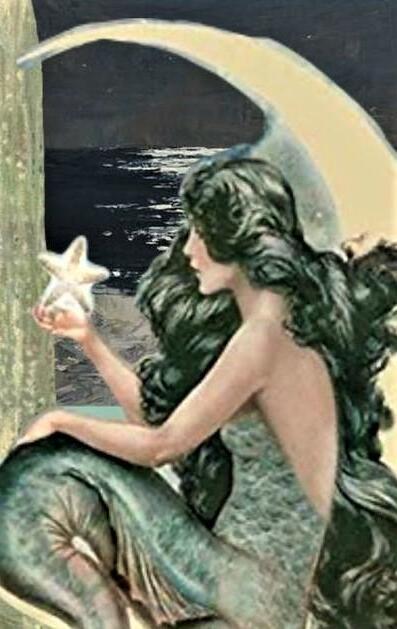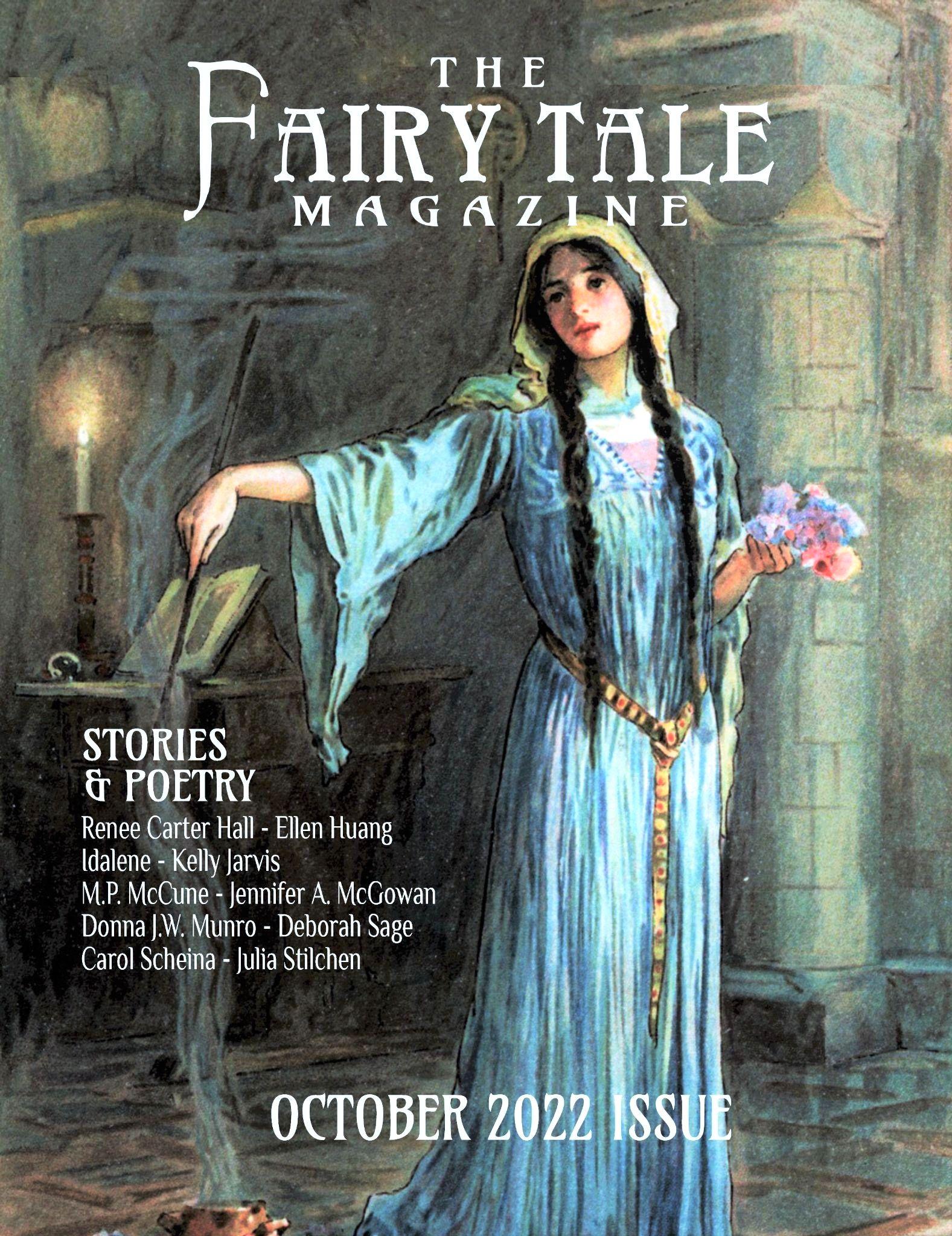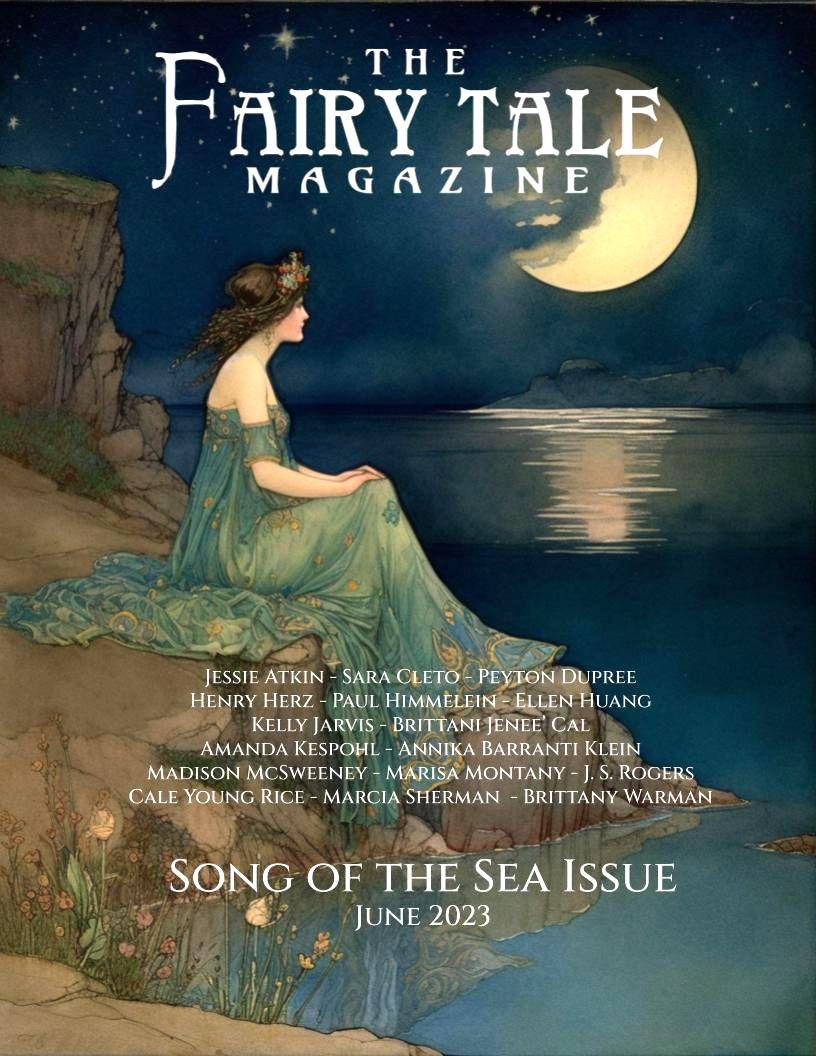
5 minute read
Love, Loss & The Mermaid
by sara cleto & brittany warman

Advertisement
While almost every story about a mermaid is a love story, they tend to end with heartbreak rather than a happily ever after. In folklore, mermaids are beautiful, dangerous, threatening, alluring… and impossible to hold on to. Like sirens, they are creatures that can never be fully domesticated or integrated into human society, though they’re often less overtly bloodthirsty than their siren cousins! A mermaid is not inherently sinister—she might rescue a drowning sailor just as easily as spelling doom for a ship with her mere presence. She can be a symbol of hope or destruction, but either way, she is something that can never be wholly known or controlled. Mermaids represent freedom—freedom from the rules and constraints of society—but that freedom comes at the steep cost of alienation and loss.
These creatures from legend have crept into our fairy tales (thanks, Hans Christian Andersen!), but they bring their legendary baggage with them.

Le
Legends are stories rooted in real locations and settings,andtheirsuperpowerisrevealingtheanxieties ofthesocietythatcreatesthem.Andmermaids,even as they move into fairy tales, have a lot to say about our fears surrounding romance. What happens when you love someone unattainable or out of your reach? What happens when the one you love cannot stay? Mermaids havetheirownanswersforus.

The heart of most stories of mermaids is longing. Longing for land, longing for understanding, and, of course, longing for love. The mermaid represents the call of the sea and the dangers there, but she also represents the beautiful, the uncanny, and everything that seems just out of reach. These are tales of what Cristina Bacchilega and Marie Alohalani Brown in their wonderful book The Penguin Book of Mermaids call “human experiences with the mysterious, nonhuman, aquatic other”—creatures that areus,butarenotus,atthesametime.Becauseofthis, mermaids become canvases onto which we paint our deepest desires and most terrifying anxieties of loss anddisconnection.
Child ballad #289, “The Mermaid,” shows us how anxieties about the ocean were associated with mermaids.Aseashanty,orworksong,“TheMermaid”' includes a scene where the crew of a ship sees a mermaid and interprets her as a sign of an impending wreck, a prediction that ultimately comes true. As folklorist StephenWinick argues, “[i]t’s pretty obvious from‘TheMermaid’thatmermaidsweren’t considered goodluck.

considered good luck. On the contrary, seeing one almost always spelled disaster [...] One explanation sometimesgivenformermaidsbeingunluckyisthattheyarefemale,andthatsailorsconsidereditbad luck to have a woman aboard most ships. Many explanations have been given for this belief. One is the possibility of jealousies arising among sailors who fall for the same girl (which seems plausible).” Here, the mermaid represents a deadly threat to the survival of the ship’s crew, but even this danger is tingedwiththethreatofromanticcompetition,jealousy,andloss.
BacchilegaandBrownremindusthat“[o]uranxietiesaboutwaterbeingsaremagnifiedbyour attraction to them, which in many stories results in the human’s loss of control, self, and even life. Embracing a water spirit can prove lethal.” While mermaids may frequently resemble beautiful humansfromthechoftheactionofthestoryisbasedaround humans from the waist up, beneath they are something else entirely. Bacchilega and Brown go on to comment that “[t]here is something deeply unsettling about a being whose form merges the human with the nonhuman. Whether they dwell in fresh or salt water, aquatic humanoids raise questions about what it is to be human and what lies beyondahumancenteredworld.Physically,theyare both like and unlike us. They eat, sleep, and breathe in a realm that we can access only temporarily, but they can live among us, as they are often able to shed the nonhuman portion of their bodies and infiltrate the human world.” Like love itself, they can be at once familiar and strange, and it is perhaps this inherent distance that seems to make most mermaid stories of love so heartbreaking when they cannotstay.
One of the keys to understanding why mermaid romantic tales are so often melancholy is the concept of liminality. Liminality is one of our favoritewords—it’ssuperuseful(andit’salsoreally fun to say out loud!). It means being on a threshold, beingnotquiteonethingoranother.Duskanddawn are liminal times, not quite day or night. Being in your teens is a liminal time because you’re no longer a child but not yet quite an adult.And hybrid creatures, like unicorns, harpies, and, yes, especially mermaids, are inherently liminal. They possess the characteristics of multiple species in one, defying simple categorization. They cannot be pinned down as either this or that; they are instead challenging, complex,and ocomplex, and representative of infinite possibilities andlongings.



BacchilegaandBrownwritethat“humansdo notdealwellwithbetwixtandbetween—liminality makes us anxious. We prefer our world organized into well-ordered and sharply defined categories, and we prefer to be in charge of it. Nonetheless, we are strangely drawn to the other who is in part a mirror image of us and appears within reach, even if mentally ungraspable.” And this is why love between humans and mermaids is often so fraught and ephemeral.The liminality of the aquatic other is attracting, repelling, and threatening all at once, which is perhaps why so many stories about them position them as dangerous creatures that we can only(failingly)attempttocontrol.

Let’s look at “The Little Mermaid” as a test case. The best-known version is definitely the 1989 Disney film (and related merchandise!), and, here, we do get a happily ever after, though Ariel has to give up her life in the sea and her close connection with her family to achieve it. The source material, however,isawholedifferentstory.
In 1837, Hans Christian Andersen published “The Little Mermaid” in Danish. Like Disney’s Ariel, Andersen’s nameless mermaid trades her superlative voice for human legs and a chance at romantic love, but that’s where the stories largely depart.Andersen’smermaid’sstoryisbleak,andshe suffers in a way Ariel is never required to. Andersen’s mermaid experiences bodily mutilation and chronic pain as the cost of her wish. The sea witchcutsouthertongue,and“everyfootstepfeltas if she were walking on the blades and points of sharp knives.” She not only has to leave behind her homeandriskherlife,butshehastopayevery home and risk her life, but she has to pay every moment with physical pain. While Ariel’s gamble ultimately pays off with marriage to Eric and the recovery of her voice, Andersen’s mermaid dies when the prince fails to love her the way that she needs. Instead of seeing her as a potential romantic partner,Andersen’sprinceneverseesthemermaidas anything more than an amusing pet. She dances for his entertainment, and that of his court, and she even sleeps outside his bedroom door! Her story is one of loss—of her home, her voice, and the hope of romanticlove.



And yet, the depth of the mermaid’s feelings is never questioned. She loves the prince because she loves humanity, loves a world completely unlike herown,and,aboveall,shewantstoobtainahuman soul. (Mermaids do not have souls in Andersen’s tale.) Her sisters offer her the chance to come back to the sea, to resume a life of soulless enchantment, and she chooses death instead. It is always her longing that underpins the story and, ultimately, makes its heartbreak so powerful and enduring. The mermaid might be different from us, but her desire andpainissomethingwehumansknowalltoowell. of

Andersen’s story was inspired by another literary mermaid tale, Undine by Friedrich de la Motte Fouqué, in which a water spirit falls in love with and marries a man who later leaves her for another human, triggering her transformation into wateritself.Inthisstory,it’snotthatthehumanman neverlovesUndine,it’sthatherothernessultimately becomes a barrier between them. He begins to see her as a kind of witch, a supernatural entity whose liminalmagicistoomuchforhim,anotherrelatively common unhappy ending for mermaids who attempt love on land. While there are, of course, also stories of evil mermaids who drown lovelorn humans for fun, it seems more common to represent them as misunderstood and/or “outside of human grasp,” as BacchilegaandBrownputit.


Despite the sadness that lingers in so many of their stories, the mermaid remains wildly popular, and for good reason. There are people today who dress up as professional mermaids for entertainment venues, attend mermaid parades (such as the big one on New York’s Coney Island each year), and wear fashion inspired by mermaids. At the time of this writing, Disney’s new, highly anticipated live-action remakeoftheirversionofTheLittleMermaidisjust days away from opening in theaters.As much as we like to show mermaids longing for human worlds, wearetheoneswhorepeatedlybringthemintoours, allowing their enticing song to tell us who we wish tobeandhowwehopetobeloved.


















